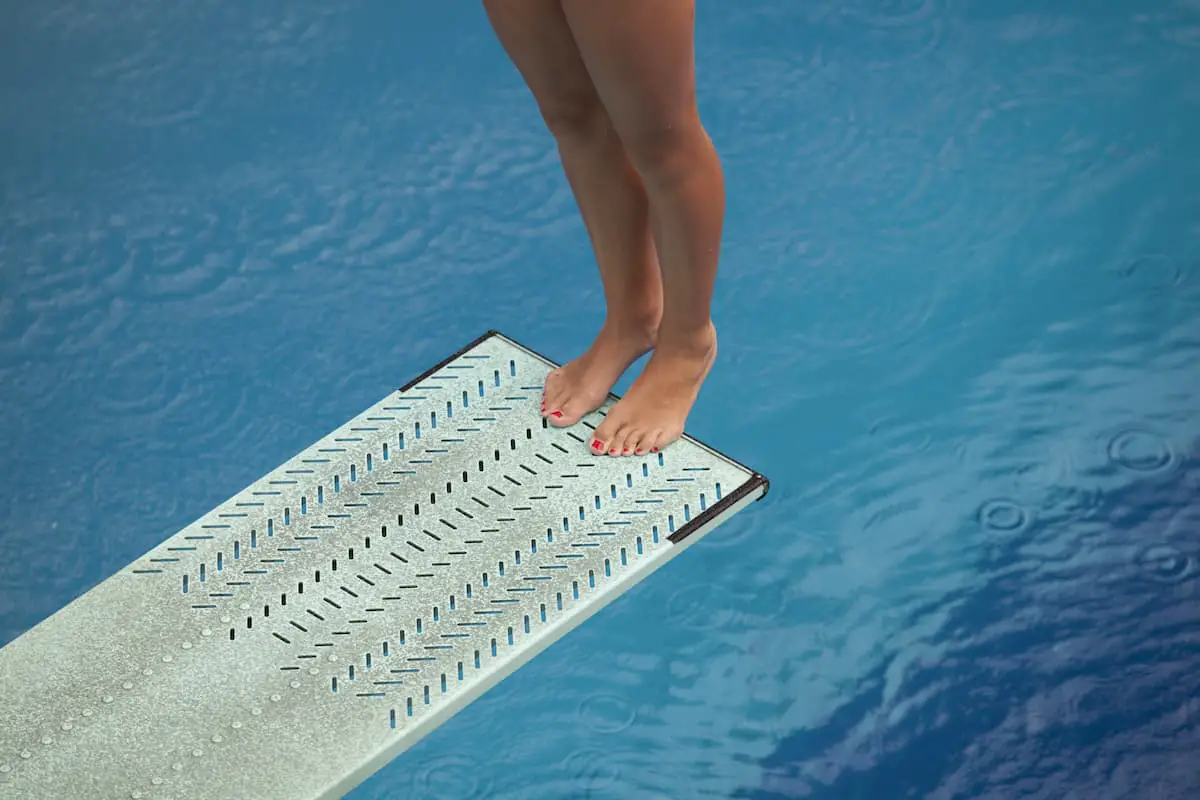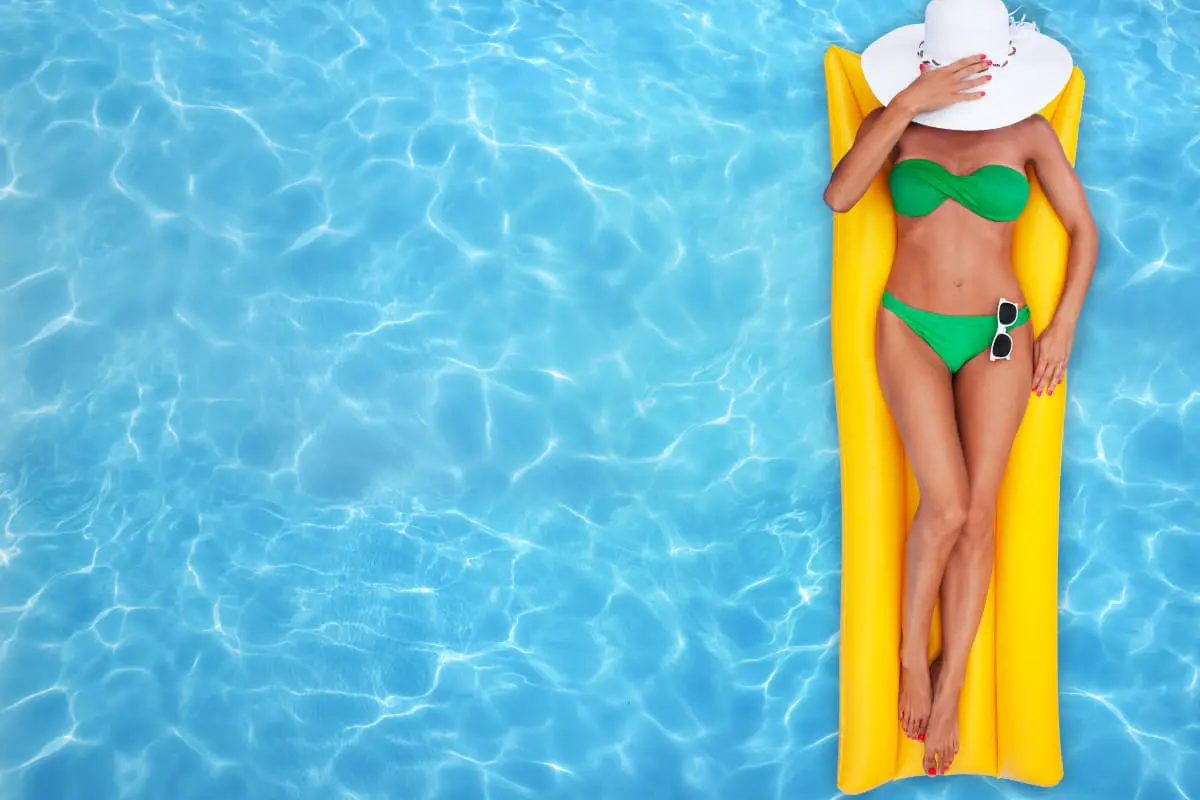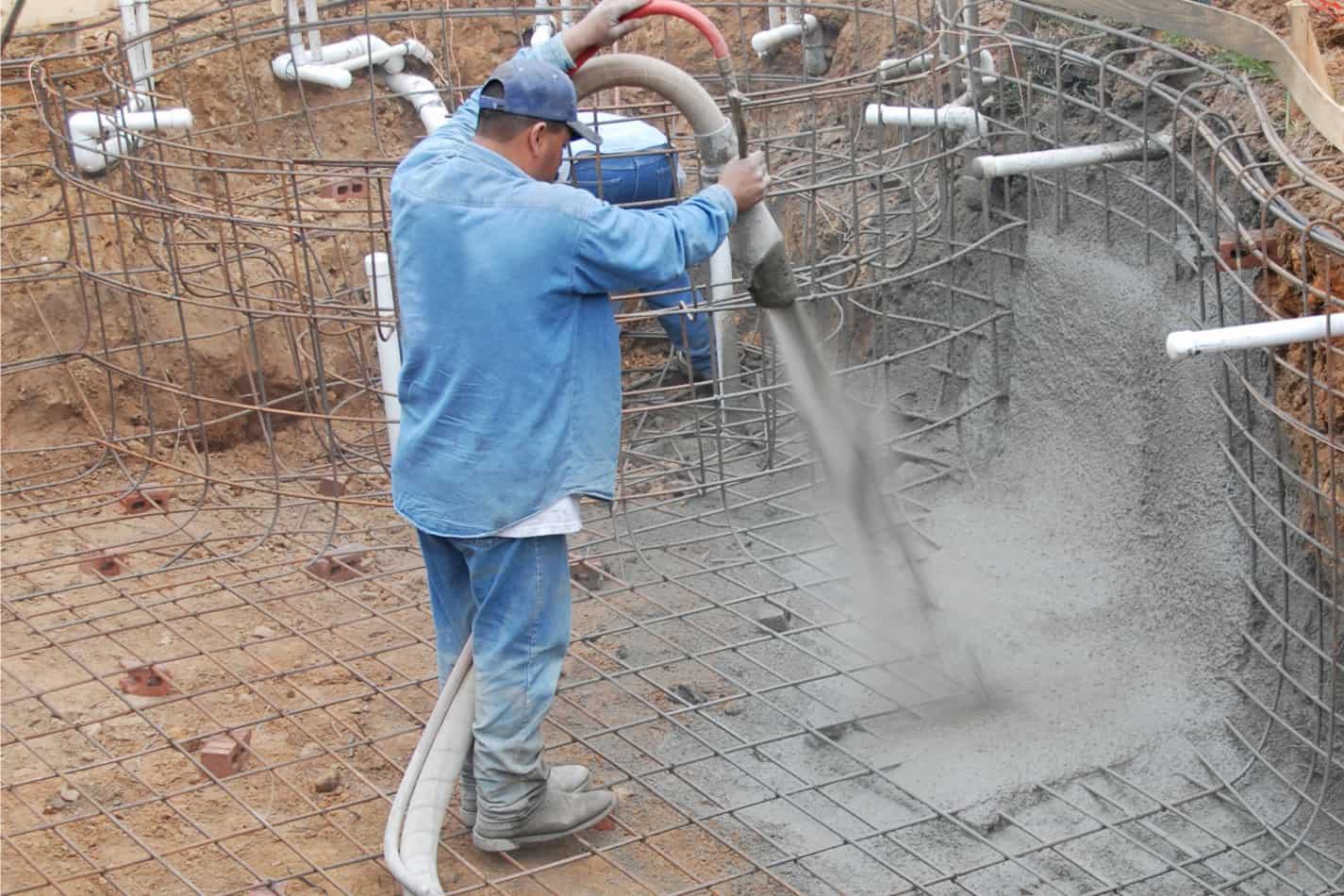How Much Pool Depth is Needed to Add a High Diving Board

As an Amazon Associate I earn from qualifying purchases.
When I first thought of adding a high diving board in my pool, I also had a similar question in mind “is my pool deep enough to add a high diving board?”. Well, I did my own research and have included my findings in this article.
The average depth of the pool for a high diving board should be 9 ft to 16 ft, depending upon the type and height of the diving board. For a 1m high springboard diving board, the depth of the pool should be 11 ft, while for a platform diving board at a similar height, it should be 11.5 ft deep.
There are many reasons why a person would want to install a diving board and a deep pool in their own home.
Be it for fun and games, or to practice their skills, they must know the importance of the correct depth of their pool to dive safely.
In this blog, we will include all the details about safely installing a diving board and how to maintain it.
Learn How to Manage Your Pool and Hot Tub
Frustrated trying to keep your pool clear? Feeling confused about when to add the right chemicals? Get the perfect easy-to-use, illustrated ebook and video course today!
How deep should your pool be for a high diving board?
If you are someone who practices diving in their house pool, or someone who just likes to dive for fun, you should know certain things about choosing the right depth of the pool.
The first thing is why you need a deep pool. When you hit the pool water headfirst while attempting a high dive, the gravitational force you hit the water with is much greater than a normal poolside dive.
The increase in gravitational force also typically means that your body can travel deeper than a poolside dive.
If you do not have a deep pool, there is a high chance you will hit your head at the pool bottom and crack open it.
The deeper the pool is, the easier it is for the diver to slow down their velocity once they hit the water.
The depth of the pool also depends on whether you have springboards or platforms as the diving board.
Here is a tabular representation of the depth of the pool that varies with the height of the diving board:
| Board type | Height of the diving board (in meters) | Depth of the swimming pool (in feet) |
| Spring | 1 m | 11.5 ft |
| board | 3 m | 12.5 ft |
| 1 m | 11 ft | |
| Platform | 3 m | 12 ft |
| Diving | 5 m | 12.5 ft |
| Board | 7.5 m | 15 ft |
| 10 m | 16.5 ft |
The height of the springboard and platform board varies, so does the depth of the pool with it. A platform board normally can be installed at the height of at most 10 meters. Whereas, a springboard can be adjusted up to the height of 3 meters.
Along with the depth of the pool, the size is also of great importance. For anyone who wishes to install a diving board, they should make sure that their pool size is at least 16’ x 32’ or bigger than that.
You should also remember that you cannot install a diving board in just any kind of swimming pool. For example, you cannot attach a diving board if your pool is above-ground.
It is because of the fact that no above-ground pool is deep enough to add a diving board and it also violates regulations, irrespective of the country or state you belong to.
Other things to consider while adding a high dive board
Apart from the depth of the pool, there are many other factors a person should consider while adding a high dive board.
Wrong measurements and a little bit of carelessness could cause fatal injuries to the divers. If a person is a professional diver and has always practiced at a certain depth, you should not decrease the depth in your house pool.
The shape of the pool where you plan to attach the diving board depends on your taste. However, it should be no less than 34 feet in length. In fact, pools that have a length of 36 to 38 feet always work best and are considered a safer option.
The length of the pool size should be measured in such a way, so that the size can be divided into one-third each for the diving well, the graduated slope, and the shallow end.
Along with the size of the pool, you should also keep an eye on the size of the backyard, because it plays an important role.
The shape of the pool as a safety requirement
While there is a requirement for the size and depth of the swimming pool, you can have a flexibly designed pool to match your aesthetic.
You can have any decorative shape as long as you are sure the diving envelope of the pool does not violate any diving regulations and code.
A diving envelope necessarily comprises three factors.
- The distance from the board the diver is going to jump.
- The depth they can dive into.
- The area in the pool where the diver would enter upon its contact with the water.
So, the diving envelope is the area surrounding the board from the front, below, and on each side.
The diving envelope depends on the size, shape, and depth of the pool. So as long as there is enough water in the diving envelope you can choose any shape of the pool you want to match your aesthetics.
Safe Position For High Diving Boards
Another safety requirement is that you must be conscious of the position of your diving board.
Even though it is true that the depth of the pool is the most important thing for a diver’s safety, the position of the board comes under some of the most crucial safety requirements.
There should not be obstruction, be it ledges, pool’s sidewalls, and/or any kind of sitting area within a ten feet radius of the board.
The entry steps to the pool should also be far away from the board to avoid any injury. Space to install a deep pool and high diving board
Even though installing a swimming pool and diving board sounds like a wonderful idea that you could use for recreational activity, the safety of the divers comes first.
You should always make sure that your backyard has enough space to install a deep pool as well as a diving board.
You will have to install extra decking to build support for the base of the board. Since the base would be required to be durable enough to not fall apart under extreme weight, you would probably need a concrete base.
Concrete is strong enough to build a robust base and keep it safe and stable.
Types of dive boards to choose from
To match the aesthetics of your pool and the design of it, you can now choose different types of dive boards, be it a springboard or platform. There is a wide range of finishing and colors you can choose from.
Some base of the dive boards can be temporary and you can keep them inside when not in use. Most of the diving boards are either made up of laminated wood or aluminum in the springboards.
Following are some of our recommended diving boards to choose from:
- TrueTread™ Diving Boards.
- Salt Pool Jump System.
- Flyte-Deck II Dive Stand.
- Supreme Jump Stand.
- U-Frame Diving Boards.
- Cantilever Jump Stand.
- Frontier II Jump Stand.
- Steel Meter™ (1/2, 3/4, 1 Meter sizes).
Source : https://srsmith.com/en-us/products/diving-boards/
Installing a diving board yourself can be a tricky subject. If you are not familiar with the process it is always a good idea to take the help of an installation professional.
Final Thoughts on Pool Depth for a Diving Board
An addition of a diving board and a deep pool can be a fun thing to do if you and your family like diving and have enough experience.
In fact, diving is one of the adventure sports that help you stay fit. So, with proper guidelines and correct measurements, your pool should just come out fine.
If you are apprehensive about any of the rules and regulations, you can always contact concerned authorities for proper directions. It is impartial that you do not wager on any chance with the construction of a deep pool.
Always remember there are reasons why the authorities have put certain limits and regulations in constructing a diving pool to be that deep.
It is not just for the sake of it, but to keep the divers safe, and possibly save them from injury-related deaths.
To conclude, the depth of the pool matters because the divers should be able to create a safe diving envelope when they dive headfirst into a pool of water.
The depth also varies with the height of the board, so keep an eye out for that. There should be enough unused areas are around the diving board without any obstruction for safety purposes.
The type of board, its length, and the gradual slope between them also matter for a safe diving session.


